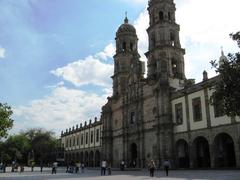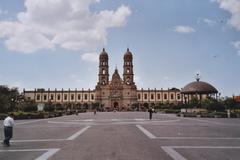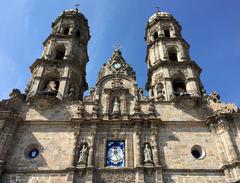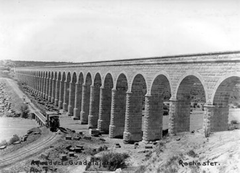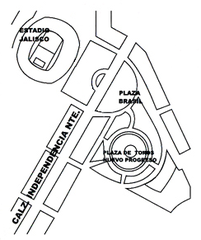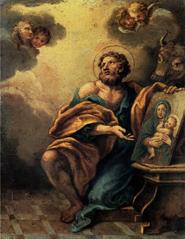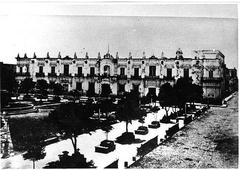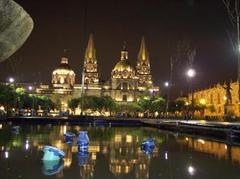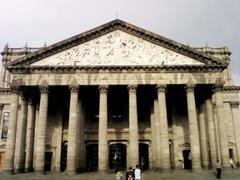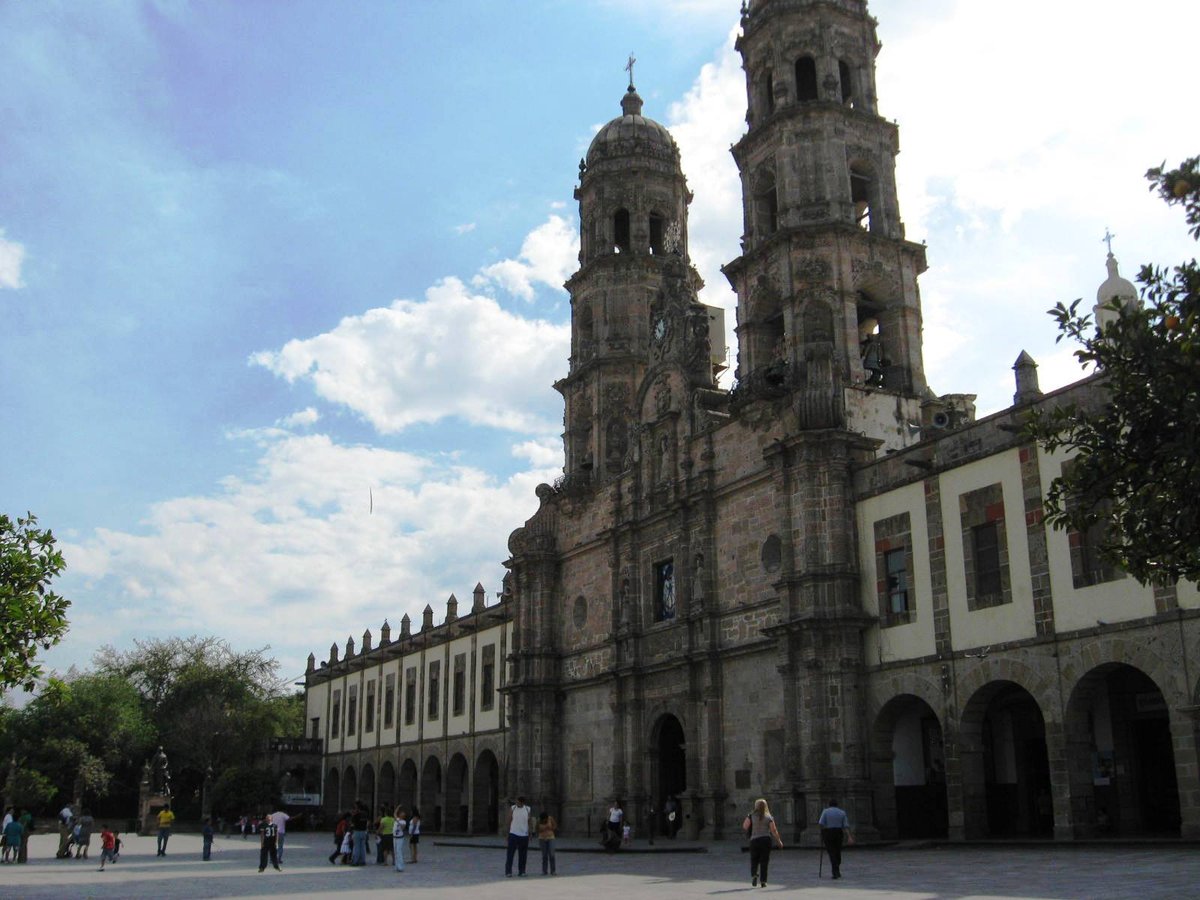
Comprehensive Guide to Visiting Basílica de Nuestra Señora de Zapopan, Guadalajara, Mexico
Date: 17/07/2024
Introduction
The Basílica de Nuestra Señora de Zapopan, located in Zapopan, a city within the Guadalajara metropolitan area in Mexico, is a monumental site rich in history, religious significance, and cultural heritage. Its origins can be traced back to the 16th century, closely tied to the Spanish colonization of Mexico and the evangelizing missions of the Franciscan friars. The construction of this basilica, which began in 1689 and concluded in 1730, showcases a unique blend of Baroque and Churrigueresque architectural styles. Central to its historical and spiritual importance is the veneration of the Virgin of Zapopan, also known as Our Lady of Expectation, whose statue was brought to the region by Franciscan friar Antonio de Segovia in 1541 (INAH).
The basilica has stood as a beacon of faith and resilience, especially during significant historical events such as the Mexican War of Independence and the Cristero War, providing sanctuary and hope to the local population. It has also been a pilgrimage site for centuries, with the annual Romería de la Virgen de Zapopan drawing over a million participants each year (Visit Mexico). Not only a religious landmark, but the basilica is also a cultural icon, inspiring art, literature, and music, and reflecting the deep-rooted Catholic traditions of the area (Guadalajara Government).
In recent years, significant efforts have been made to preserve the basilica’s historical integrity, including its designation as a UNESCO World Heritage site in 2008 as part of the Hospicio Cabañas listing (UNESCO). As a visitor, you can explore this remarkable site, engage in its rich history, and participate in its vibrant cultural events, ensuring a memorable and enriching experience.
Table of Contents
- History of Basílica de Nuestra Señora de Zapopan
- Visiting Hours and Tickets
- Travel Tips
- Nearby Attractions
- Accessibility
- FAQ
- Conclusion
History of Basílica de Nuestra Señora de Zapopan
Origins and Early History
The foundation of the Basílica de Nuestra Señora de Zapopan is closely tied to the Spanish colonization of Mexico and the spread of Christianity by Franciscan missionaries. The Franciscans arrived in the region in the early 1530s, and by 1541, they had established a mission in Zapopan. The construction of the basilica began in 1689 and was completed in 1730, making it one of the oldest religious structures in the region (INAH).
Architectural Development
The basilica’s architecture is a blend of Baroque and Churrigueresque styles, which were prevalent in Spanish colonial architecture. The façade is adorned with intricate carvings and statues, including that of the Virgin of Zapopan, to whom the basilica is dedicated. The interior features a stunning altar made of wood and gold leaf, showcasing the craftsmanship of the period. The basilica also houses several chapels, each dedicated to different saints, reflecting the deep-rooted Catholic traditions of the area (Guadalajara Government).
The Virgin of Zapopan
Central to the basilica’s history is the veneration of the Virgin of Zapopan, also known as Our Lady of Expectation. The statue of the Virgin, which is believed to have miraculous powers, was brought to the region by the Franciscan friar Antonio de Segovia in 1541. The Virgin of Zapopan is considered the patroness of Guadalajara and is credited with numerous miracles, including protection against natural disasters and epidemics. The statue is made of corn paste and stands at approximately 34 centimeters tall (Vatican News).
Historical Significance
The basilica has played a significant role in the religious and cultural life of the region. It has been a pilgrimage site for centuries, attracting thousands of devotees each year. One of the most notable events is the annual Romería de la Virgen de Zapopan, which takes place on October 12th. This event marks the return of the Virgin’s statue to the basilica after a tour of various churches in Guadalajara. The Romería is one of the largest religious processions in Mexico, drawing over a million participants (Visit Mexico).
Modern Developments
In recent years, the basilica has undergone several restorations to preserve its historical and architectural integrity. These efforts have been supported by both the local government and international organizations. In 2008, the basilica was declared a UNESCO World Heritage site as part of the “Hospicio Cabañas, Guadalajara” listing, recognizing its cultural and historical importance (UNESCO).
Cultural Impact
The basilica is not only a religious landmark but also a cultural icon. It has inspired numerous works of art, literature, and music. The Virgin of Zapopan has been the subject of various artistic representations, including paintings, sculptures, and even films. The basilica itself has been featured in several documentaries and travel shows, highlighting its architectural beauty and historical significance (National Geographic).
Preservation Efforts
Preservation of the basilica is an ongoing effort, involving both local and international stakeholders. The Instituto Nacional de Antropología e Historia (INAH) has been instrumental in these efforts, conducting regular assessments and restorations. In 2020, a major restoration project was undertaken to address structural issues and restore the original colors and materials of the basilica. This project was funded by both the Mexican government and private donors, reflecting the widespread recognition of the basilica’s importance (INAH).
Visiting Hours and Tickets
Visitors to the Basílica de Nuestra Señora de Zapopan can explore the site daily. The basilica is open from 6:00 AM to 8:00 PM. There is no entrance fee, but donations are welcome to support preservation efforts. Guided tours are available for a small fee, providing visitors with in-depth historical and architectural insights.
Travel Tips
When planning a visit, it is advisable to go early in the morning or later in the afternoon to avoid the midday crowds. Photography is allowed, but flash photography is prohibited inside the basilica to protect the artworks. Comfortable walking shoes are recommended as the site involves a considerable amount of walking.
Nearby Attractions
While visiting the basilica, consider exploring other historical sites in Zapopan. Nearby attractions include the Zapopan Art Museum, the Plaza de las Américas, and the Arcos de Zapopan. These sites offer additional cultural and historical experiences, making your visit to Zapopan even more enriching.
Accessibility
The basilica is accessible to visitors with disabilities. Ramps and designated pathways ensure that everyone can enjoy the historical and spiritual ambiance of this remarkable site. Accessible restrooms are also available.
FAQ
What are the visiting hours for Basílica de Nuestra Señora de Zapopan?
The basilica is open daily from 6:00 AM to 8:00 PM.
How much do tickets cost to visit Basílica de Nuestra Señora de Zapopan?
There is no entrance fee, but donations are appreciated. Guided tours are available for a small fee.
Are there any special events at the basilica?
Yes, the annual Romería de la Virgen de Zapopan on October 12th is a major event, attracting over a million participants.
Is the basilica accessible to visitors with disabilities?
Yes, the basilica offers ramps and designated pathways for accessibility.
Conclusion
The Basílica de Nuestra Señora de Zapopan stands as a testament to the rich history and cultural heritage of Guadalajara and Mexico as a whole. Its origins date back to the early days of Spanish colonization, and it has since become a symbol of faith, resilience, and artistic achievement. The basilica continues to be a focal point for religious and cultural activities, drawing visitors from around the world who come to admire its beauty and partake in its traditions. Preservation efforts ensure that this historical monument will continue to inspire future generations (Guadalajara Government).
For more information, check out the official website or visit our related posts on historical sites in Zapopan.
References
- INAH (Instituto Nacional de Antropología e Historia). (n.d.). https://www.inah.gob.mx/
- Guadalajara Government. (n.d.). https://www.guadalajara.gob.mx/
- Visit Mexico. (n.d.). https://www.visitmexico.com/
- UNESCO World Heritage Centre. (n.d.). https://whc.unesco.org/
